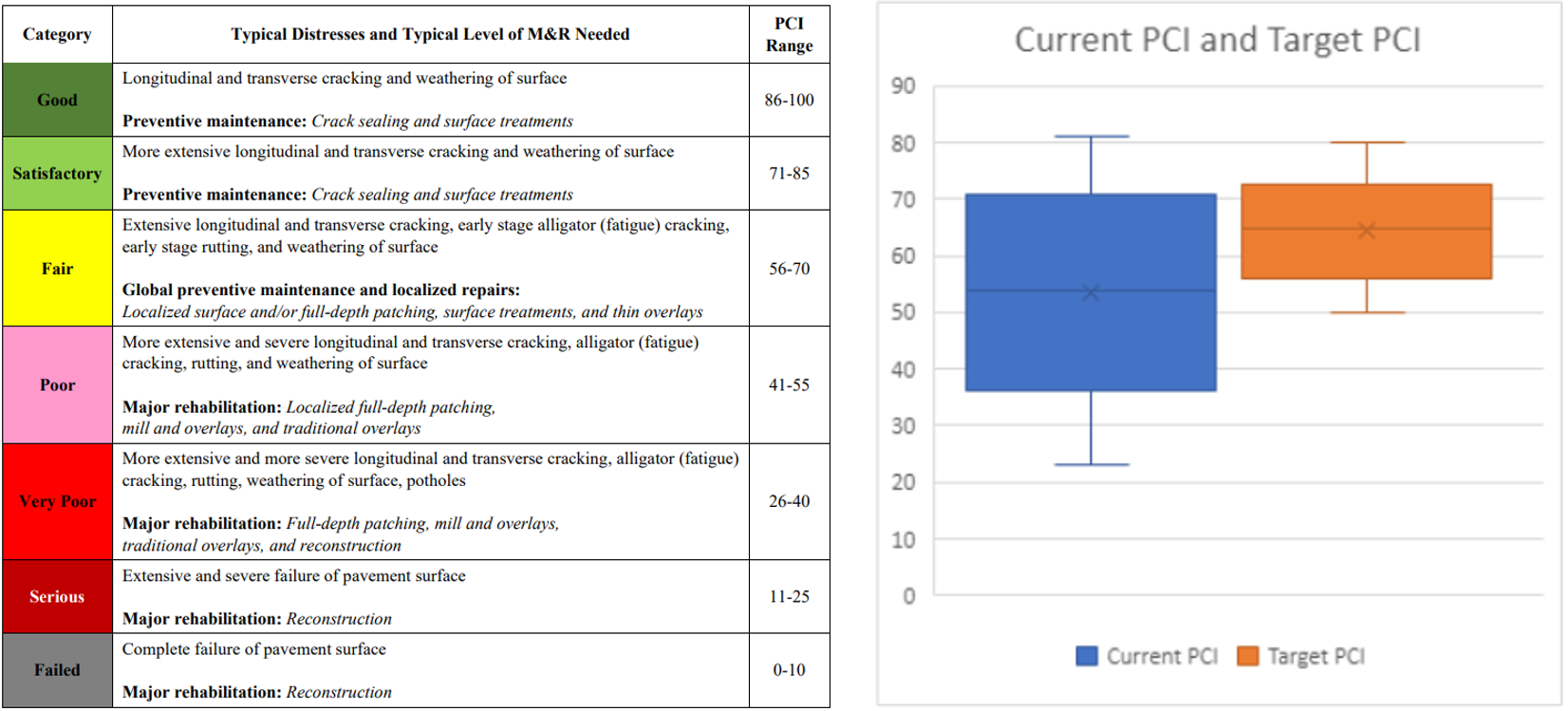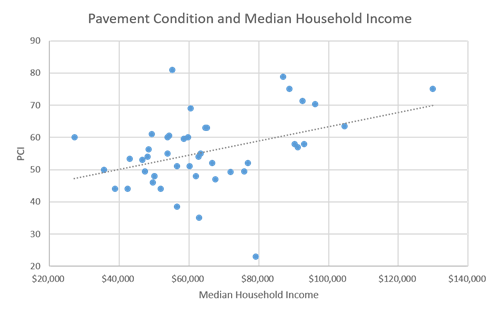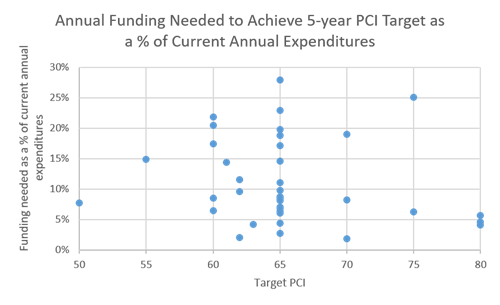All across the region, municipalities are struggling to maintain their local roads. Communities of all sizes will need to significantly increase road maintenance spending just to keep things from getting worse. Yet in many places, we’re still . It’s time to hit pause and rethink how we’re putting out transportation dollars to work.
Whether you’re a driver, a cyclist, or a bus rider, we all see how much road conditions can vary from block to block. Why is it that you can be gliding along an immaculately smooth, freshly painted street one moment, then turn on to what’s only a few steps above dirt? What most people don’t realize is that within every municipality, maintenance responsibilities for the road network are split between many different jurisdictions. The state or county may be responsible for some of the bigger thoroughfares, while your municipality is on the hook for the so-called “local” roads.
The Illinois Department of Transportation (IDOT) and the county divisions of transportation typically have the capacity, funding, and expertise to manage the roadways under their jurisdictions. The same is not always true for municipalities. Consequently, the state’s local roads are consistently in a poor state of repair. To help correct this issue in Northeast Illinois, the Chicago Metropolitan Agency for Planning (CMAP) provided technical assistance to 44 municipalities and one county between 2018 and 2021 to develop pavement management plans. These plans gathered baseline information on pavement condition and helped local governments institute best practices in asset management to improve their roads in a cost-effective manner.
The data gathered in the 44 municipal plans offers a unique view into the quality of the local roads in the Chicago region and on the fiscal impacts of maintenance. During previous cycles of growth, many communities expanded their local road network without taking into account the full lifecycle costs associated with roadway maintenance and repair. Now, some find themselves unable to dedicate enough funding to simply keep roads in their current condition, much less to improve them. If we can’t even keep existing roads in decent shape, why are we still building new ones?
Communities of all shapes and sizes are struggling with road maintenance, but wealth helps
The pavement management plans created through CMAP’s technical assistance program used a pavement condition index (PCI) to establish a baseline for a community’s local road network. Each plan then set a five-year pavement condition index target based on the adoption of best practices, taking into account fiscal constraints. Existing conditions vary widely, but both the median and the mean current PCI for the 44 municipalities in the program fell into the “poor” category. The plans set sobering 5-year goals, with the vast majority falling in the “fair” category, well short of “satisfactory” and nowhere close to “good.”

The municipalities that participated in the program varied widely in terms of population and density, from tiny exurban Burlington with just 681 people (2019 5-year ACS data), to Chicago-adjacent Cicero with over 82,000 people. We initially hypothesized that denser or larger places may be better equipped to provide higher-quality or more cost-effective services, and that may translate to better road quality. But the data don’t support that. So what does influence a local government’s ability to effectively maintain their local roads? Surprise, surprise: it’s all about the money. There is a much more apparent relationship between median household income and pavement condition. This suggests that higher-income

communities have been more successful at keeping their local roads in serviceable condition. This could be due to simply having more money for capital expenses, or having more expertise. But even among municipalities with higher-than-average incomes, very few manage to break into that “satisfactory” category, and
We need to spend a lot to get very little
Clearly, local road maintenance is burdensome for many municipalities. But to get a sense of magnitude, we compared the amount of money municipalities spend on pavement management to their total annual expenditures. Since expenditures can vary considerably from year to year, we used multi-year averages when possible. And since the completion of a pavement management plan will likely impact spending, we only used budget data from the years before a municipality's plan was published.
Currently, 36 out of the 44 communities spend 0 to 5% of their total annual expenditures on pavement management, and nobody spends more than 12%. In order to reach the five-year target PCI, at least 33 communities must spend 5% or more of their total expenditures on pavement management. Incredibly, 11 would need to dedicate over 15%. That’s an enormous financial burden. On average, these municipalities will need to roughly quadruple current pavement management spending to reach their five-year targets.

As significant as those numbers are, what they would pay for is quite sobering. As mentioned before, the five-year target PCIs are low, with the majority at or below 65. That’s just 10 points above a “poor” rating. On average, municipalities need to nearly quintuple the amount they spend on pavement management to reach their five-year target, which is still not particularly good. The Village of Burlington was excluded from this chart because they would need to allocate an astounding 189.6% of their entire city budget towards pavement management in order to reach their target PCI of 60.
Existing conditions are poor, and yet we’re building more
Municipalities are struggling to maintain their local roads. The communities in CMAP’s program will have to shoulder huge financial burdens to meet their PCI goal, or to simply keep things from getting any worse. Yet an analysis of the Chicago region’s Transportation Improvement Program (TIP) revealed that, since 2016, at least six of the communities in the pavement management program have paid or plan to pay for new road expansion projects.
A total of $6.2 million in local funds were spent on expansion projects for roadways under local jurisdiction. Another $6.6 million in federal surface transportation program (STP) funding was used. To put those numbers in perspective, 30 of the 44 participating municipalities need less than the combined $12.8 million to close the five-year funding gap needed to reach their target PCI. As an example, one municipality spent $3.15 million in local funds on a single road expansion project despite needing to spend an extra $4.68 million over 5 years to hit their PCI target of 65 (fair condition).
We also know that this is just the tip of the iceberg. It’s likely that many local and county road expansion projects aren’t even included in the TIP because they don’t require federal funding. All around the region, municipalities struggle to maintain what they already have while creating additional future maintenance liabilities. This highlights the need to think about the full lifecycle cost of our transportation investments. Communities should determine their mobility needs, then choose the right mixture of transportation investments to move the region toward its climate, equity, and public health goals – while also being financially sustainable.